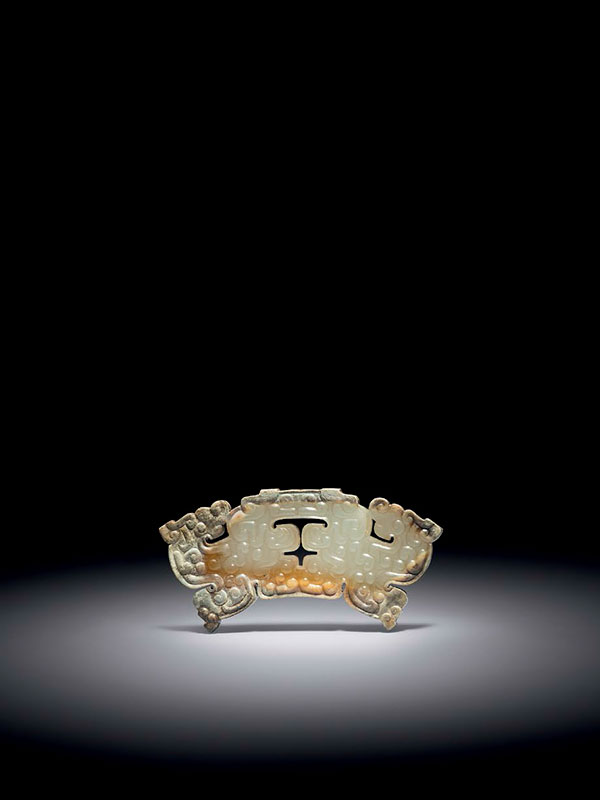Jade pendant huang
A jade pendant of arched form, huang, formed as two dragons with their heads turned back. Each dragon is symmetrically depicted in silhouette with a horned head, sinuous body and strong forelimb with claws. The dragons’ lower bodies are connected. Each body is adorned with a dense pattern of S-shaped, silkworm-like motifs in low relief. A narrow band of striation runs parallel to the outline of the pendant. The stone is of predominately yellowish celadon tone with some areas of calcification visible.
Jade pendants of animal form were popular as amulets during the Shang and early Western Zhou periods. They are commonly found in crouching tiger shape; such tiger pendants were first supplemented and subsequently supplanted by dragon pendants, which were widespread in the 4th century BC.1 The jades excavated from the tomb of King Cuo, State of Zhongshan of the Warring States period provide some good examples of tiger-shaped and dragon-shaped pendants, their bodies similarly covered with a silkworm-like motif in low relief.2 Three comparable Warring States jade pendants are in the collection of the Palace Museum, Beijing: two with a double-dragon head design and grain patterns; one with a coiled dragon shape and silkworm-like motifs.3
- Rawson, J. Chinese Jade from the Neolithic to the Qing, London, the British Museum press, 1995, pp. 260 -1
- Liu, Jiansheng ed. Warring States Treasures- Cultural Relics from the State of Zhongshan, Hebei Province, Provisional Urban Council of Hong Kong, 1999, nos. 72 & 75, pp. 182-3, 188-9
- Compendium of Collections in the Palace Museum, Jade, vol. 3- Spring and Autumn period and Warring States period, The Forbidden City Publishing House, Beijing, 2011, nos. 71, 157 & 158, pp. 74, 154, 155

